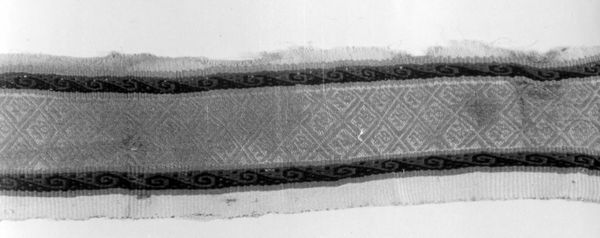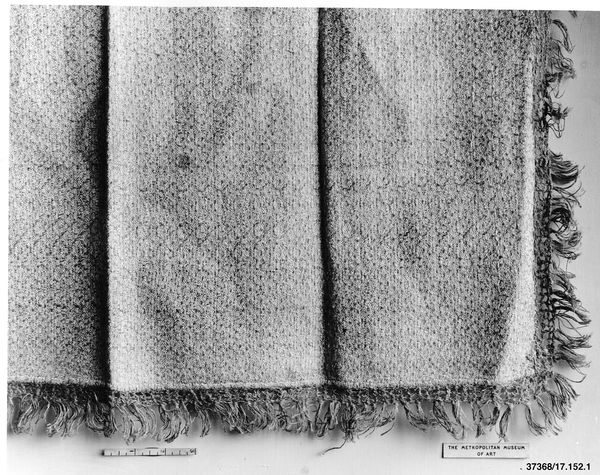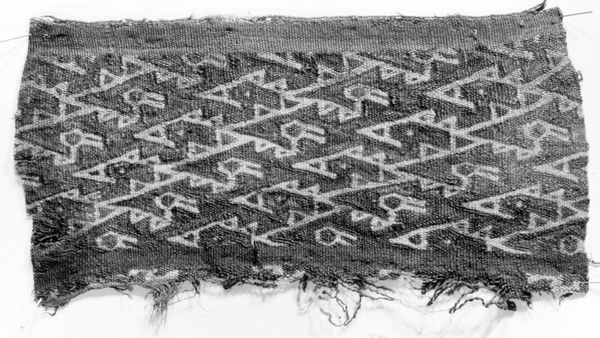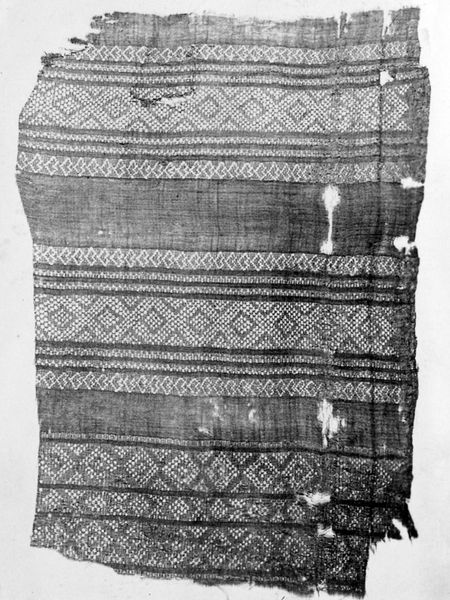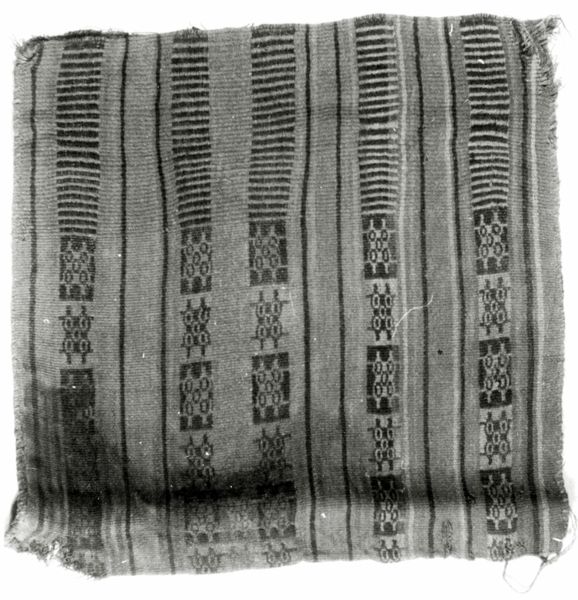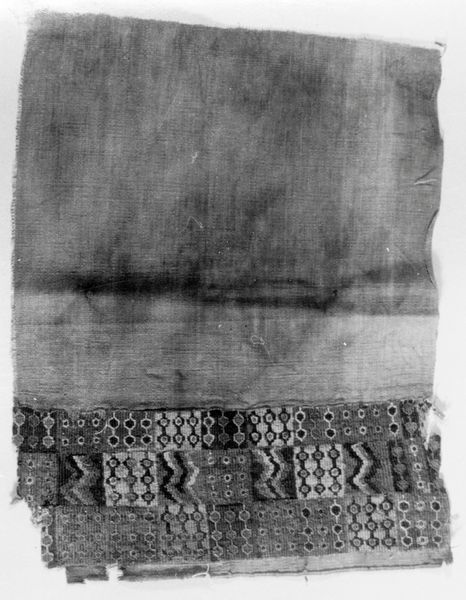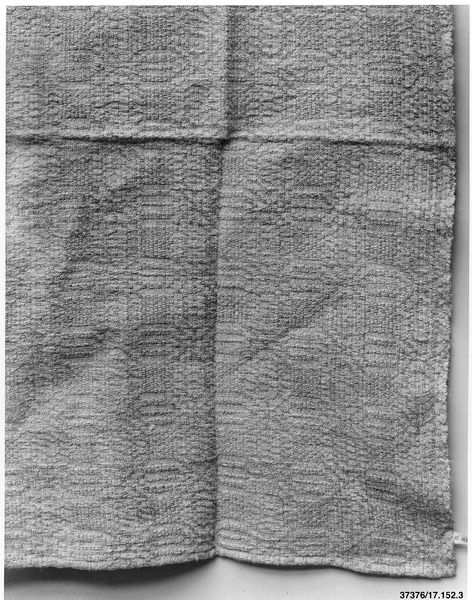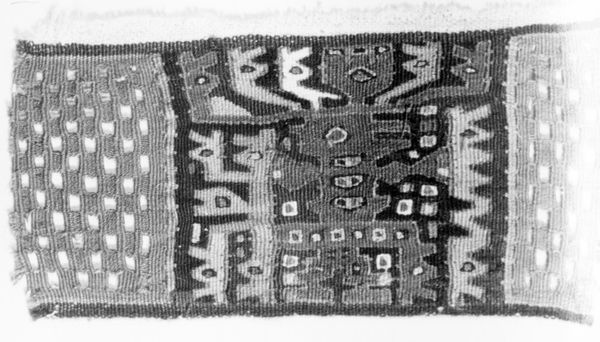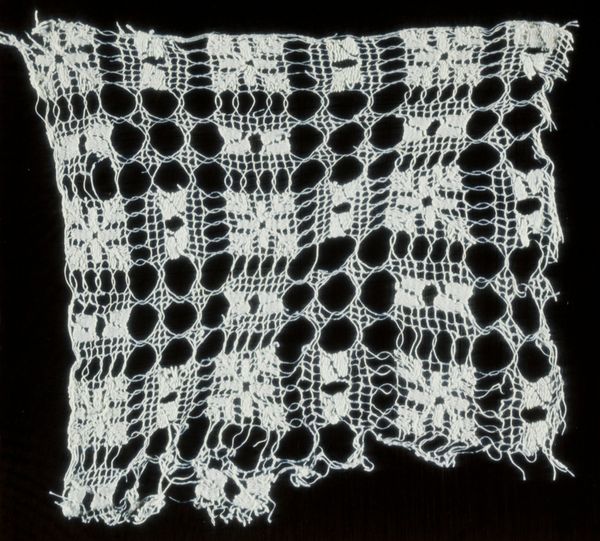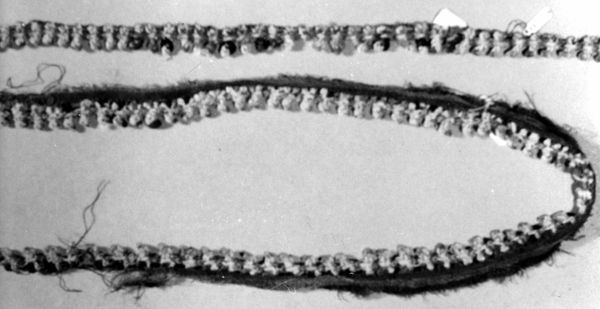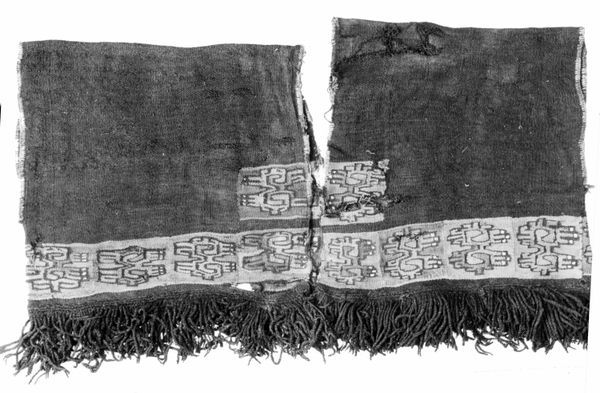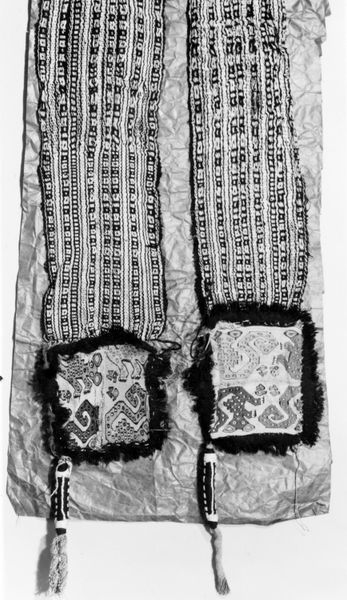
fibre-art, weaving, textile
#
fibre-art
#
weaving
#
textile
#
geometric
#
indigenous-americas
Dimensions: 54.6 × 31.1 cm (21 1/2 × 12 1/4 in.)
Copyright: Public Domain
Curator: This is an intriguing textile fragment from the Chancay culture, possibly dating between 1000 and 1476, entitled “Panel.” It's currently held at The Art Institute of Chicago. Editor: The visual effect is captivating; such structured repetition, yet the state of aged undress lends it a solemn air. Curator: Indeed, let’s unpack that structure. Notice how the central field utilizes a grid of diamond shapes. Within each diamond, nested geometric motifs create visual complexity and texture. This structured repetition echoes deep seated symbolic significance within indigenous Andean cultures. Editor: It’s amazing to contemplate the making. Think about the labor, the slow, intentional process of interweaving the materials to create such a detailed pattern by hand. Was it a communal act or the work of a single artisan? Curator: Contextually, Chancay textiles served various purposes, from clothing and funerary wrappings to decorative hangings. Given the elaborate nature of the weave, this "Panel" may have held a special status, perhaps employed in ritual practices or denoting social rank. Editor: The materiality itself tells a story. The fibers, most likely cotton or wool from camelids such as alpacas, were painstakingly spun, dyed with natural pigments, and then woven together. Its production demanded extensive knowledge of materials, dyeing techniques, and complex weaving methods. Curator: From a formalist perspective, I'm struck by how the weaver modulates figure-ground relationships, constructing shifting fields of perception in only two colors. Editor: Exactly. This panel is a record of indigenous ingenuity, material practice, and social meaning. Its fragmentary state reminds us of time’s relentless passage. Curator: For me, the strength of this piece resides in its internal consistency and its compositional rhythms—regardless of any further sociohistorical narratives. Editor: But isn’t that history integral to understanding the choices that led to the panel’s formal characteristics? Food for thought.
Comments
No comments
Be the first to comment and join the conversation on the ultimate creative platform.
